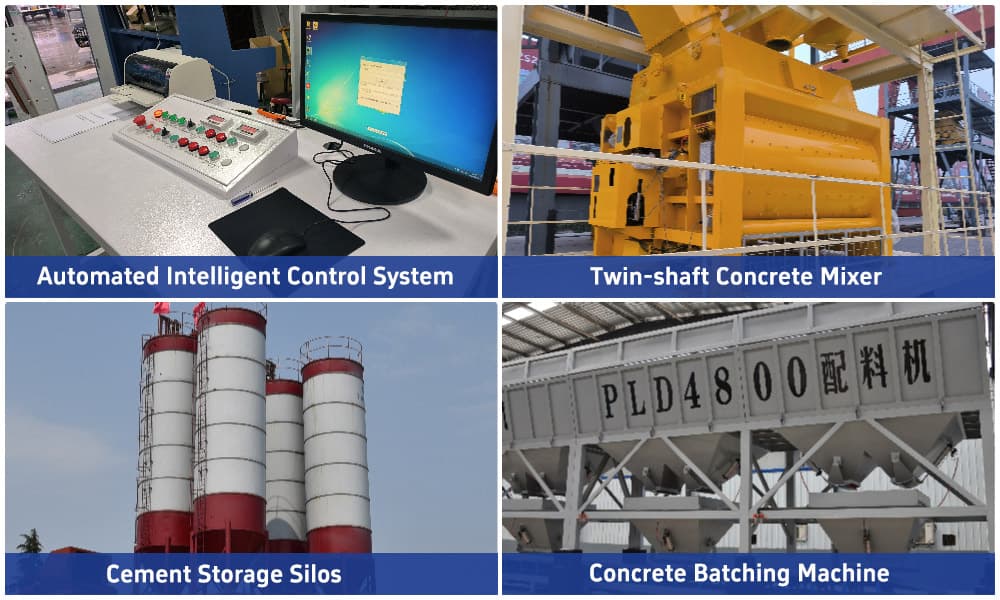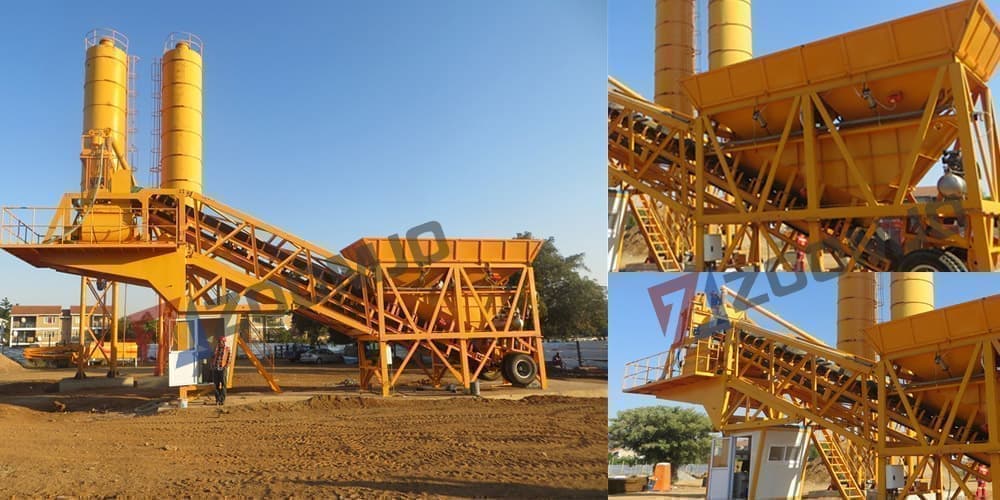How to Calculate Concrete Batch Plant Costs?

Investing in a concrete batching plant is an important business decision, and cost estimation is a crucial part of it. Concrete batching plant is an indispensable infrastructure for the construction industry, and a reasonable estimation of its cost not only helps to formulate a well thought-out investment plan, but also lays a solid foundation for future operation and management. In this article, we will discuss how to comprehensively calculate the cost of concrete mixing plant, to help investors fully understand and make informed investment decisions.
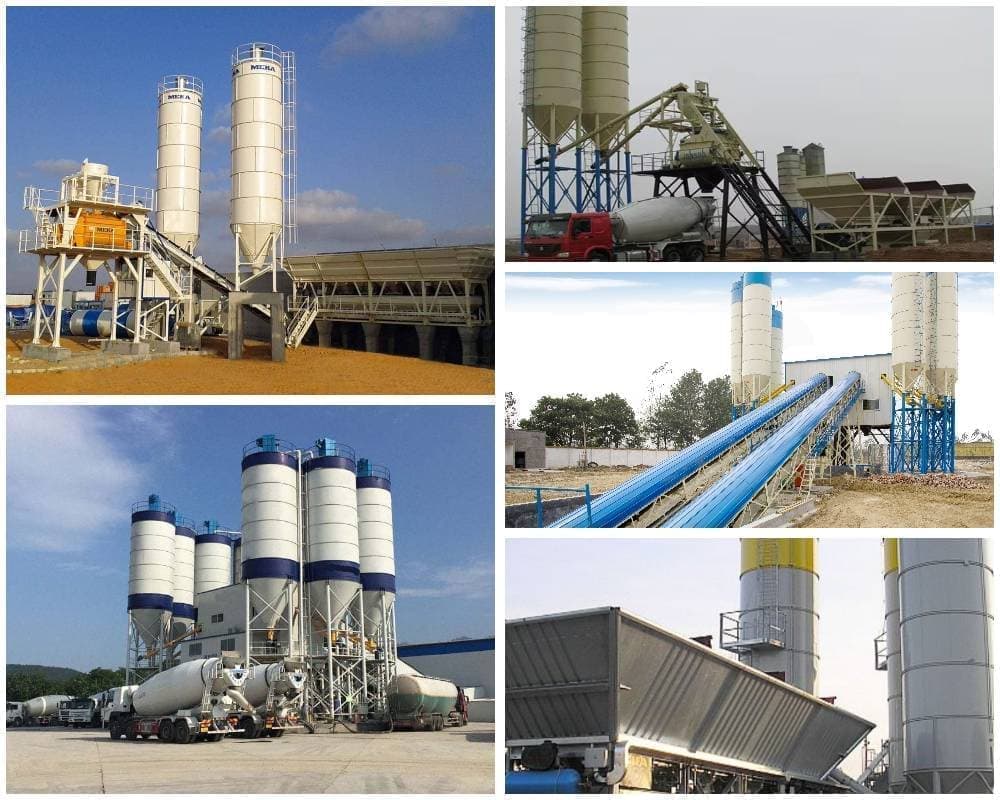
Prospects of investing in concrete mixing plant
With the continuous investment in global infrastructure construction and increasingly stringent environmental protection requirements, modern and environmentally friendly concrete mixing plants have a broad market prospect. A reasonably planned investment is expected to yield considerable returns.
The investment cost of concrete mixing plant is complex and varied, how to effectively control the cost and maximise the return on investment is the focus of investors. We will provide you with practical solutions. Through in-depth analysis of key cost factors such as energy consumption, maintenance expenditure and environmental compliance, and sharing of practical methods to improve operational efficiency, we will help you to easily grasp the cost calculation methodology, optimise investment decisions and ultimately achieve profitability.
Key factors affecting the cost of a concrete batching plant
The cost of investing in a concrete batching plant varies depending on size, configuration and specific needs, and typically ranges from $60,000 to $250,000 or more. Before making a decision, an investor needs to conduct adequate market research, consider factors such as site selection, equipment selection, financing, operating costs and potential risks, and develop a thorough investment plan.
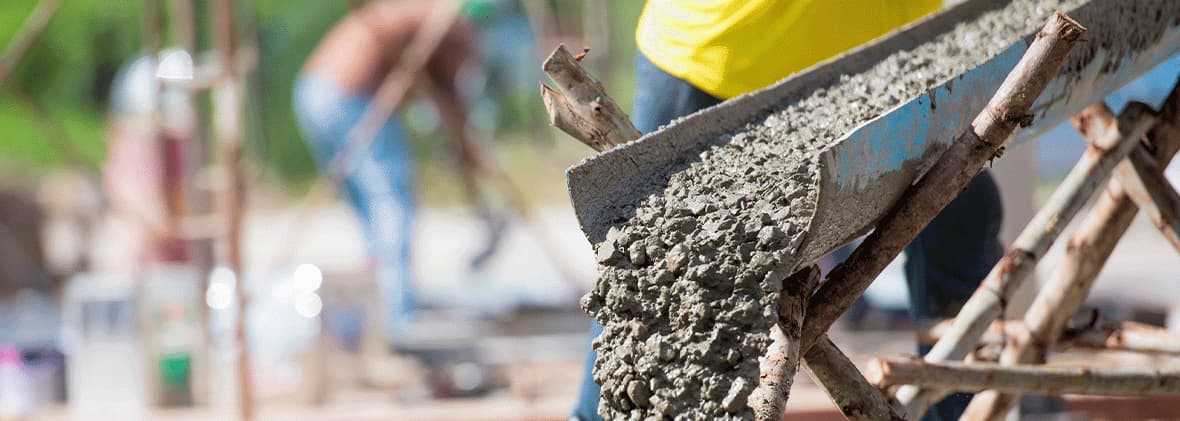
The key factors affecting the cost of a concrete batching plant are detailed below:
1. Equipment procurement costs
Concrete mixing plant (or concrete batching plant) is an equipment used for centralised mixing and production of concrete, which mixes cement, sand, gravel, aggregate, water and additives in proportion to produce high-quality concrete, which is widely used in the fields of building engineering, road and bridge construction.
The type and production capacity of the mixing plant are the key factors affecting the purchase cost of the equipment. According to the installation method and production capacity, the mixing plant can be divided into the following types:
Classified according to the installation method:
-
Fixed concrete mixing plant: It is suitable for long-term fixed location production scenarios such as large engineering projects. The advantages are large production capacity, high automation and stable operation; the disadvantages are complicated installation and dismantling, which are not suitable for projects that require frequent relocation.
-
Mobile Concrete Mixing Plant: Suitable for projects that require frequent relocation, such as road construction and bridge construction. The advantage is that it is easy to install and dismantle, and can be quickly transferred to a new construction site; the disadvantage is that the production capacity is relatively small, which is suitable for small and medium-sized projects.
Classification by production capacity:
According to the concrete production per hour, the mixing plant can be divided into different specifications, such as 25m³/h, 50m³/h, 90m³/h, 180m³/h and so on. Generally speaking, the larger the production capacity, the higher the equipment size and cost.
Below is the range of equipment purchase cost according to production capacity:
-
Small mixing plants (25-50 m³/h): Equipment purchase cost is approximately USD 38,000 to 128,000
-
Medium-sized plant (50-150 m³/h): equipment purchase cost of approximately USD 52,000-200,000.
-
Large mixing plants (>150 m³/h): equipment procurement costs of approx. 150,000 to 255,000 USD or more.
It should be noted that the unit cost of a mobile plant is usually lower than that of a stationary plant with the same capacity, but the total investment may rise due to frequent relocations and lower productivity. In contrast, the cost of a large, customised mixing plant (usually fixed) can exceed US$250,000.
In addition to production capacity and type, the following factors can affect equipment price:
-
Brand: Domestic and foreign well-known brand equipment is usually more expensive, but the quality and after-sales service is more guaranteed.
-
Configuration: Higher degree of automation configuration, such as fully automatic control system, accurate weighing system, etc., the price will be increased accordingly.
-
Technology level: the use of advanced technology equipment, such as energy-saving and environmentally friendly equipment, high-performance mixing host, etc., the price will be higher.
2. Site development cost
Site development costs cover the construction of land and infrastructure and include, inter alia:
-
Land cost: Includes purchase or lease cost, which is affected by geographical location (accessibility affects the price) and area size (determined by the size of the mixing plant).
-
Site preparation: Includes costs for site levelling (based on topography and soil quality) and foundation construction (based on equipment weight and stability requirements).
-
Building construction: including the construction of plant and other buildings, the cost is affected by the building area and structure (steel structure is fast and costly, concrete structure is relatively low cost and long cycle).
-
Utilities: Includes the construction of facilities for power supply (transformers, switchboards, etc.), water supply (pipelines, tanks, etc.), and drainage (pipelines, sewage treatment facilities, etc.).
3. Equipment installation costs
Equipment installation costs include transport, unloading and on-site installation:
-
Equipment transport and unloading: Costs are affected by the distance travelled (the further the higher) and the weight and volume of the equipment (the larger the higher).
-
On-site installation: Includes the cost of wages and travelling expenses for professional installers, as well as the cost of auxiliary materials (e.g. bolts, gaskets, etc.) required for installation.
4. Raw material costs
Raw material cost is the main cost in operation, which includes the following aspects:
-
Cement: Its cost is mainly affected by the purchase price and transport cost. Purchase price varies according to market demand and supply, brand and quality.
-
Sand: the cost depends on the type of sand (e.g. river sand, mechanism sand, etc.), which varies in price and performance from one type to another. In addition, the quality of sand affects the strength and durability of concrete.
-
Aggregates: Costs are affected by the type (e.g. crushed stone, gravel, etc.) and quality of aggregate, with different types having different prices and properties. Aggregate quality, such as particle size and impurity content, also affects the performance of the concrete.
-
Admixtures: The cost is mainly influenced by the type and quantity of admixture (depending on the design requirements of the concrete) and the purchase price, which is influenced by the market and the supplier.
-
Water: The cost depends on the choice of water source, such as tap water, groundwater, etc., and the price of different water sources varies
5. Operating costs
Operating costs are the daily operating expenses, including:
-
Labour costs: Including salaries, bonuses and benefits for operators, maintenance and management personnel, which are affected by the number of personnel and local wage levels.
-
Fuel costs: including electricity, diesel fuel, etc., affected by the energy consumption of equipment and energy prices (affected by the market and policy).
-
Maintenance and repair costs: including regular maintenance of equipment (to extend the service life, reduce the failure rate) and failure to repair the material costs, labour costs and so on.
Total investment budget of concrete mixing plant
Combining the equipment procurement, land and infrastructure, installation and commissioning, operation, environmental protection and other factors described in the previous section, the total cost of investing in a concrete mixing plant varies depending on the scale, configuration, region and other factors, and can be roughly divided into the following categories:
-
Small-scale mixing plant (25-50 m³/h): The total investment is usually between US$80,000 and US$150,000 USD. This type of mixing plant is suitable for small projects or investors with limited initial investment.
-
Medium-sized mixing plants (50-150 m³/h): The total investment is usually between US$120,000 and US$250,000. This type of plant is suitable for medium-sized construction companies or concrete suppliers that are able to meet the needs of larger-scale projects.
-
Large Batching Plants (>150 m³/h): The total investment is usually between USD 150,000 and USD 300,000 or more. This type of plant is suitable for large infrastructure projects or for concrete producers with a long and stable operation.
It should be emphasised that these are only approximate cost ranges and that the actual investment amount will be influenced by a number of factors.
Actual Case Study
In order to illustrate the investment costs more concretely, we will use the example of investing in a medium-sized mixing plant with a capacity of 90 cubic metres per hour in Manila, Philippines:
Case: Investment analysis of a 90 m³/h medium-sized mixing plant in Manila, Philippines
| Cost items | Estimated cost (USD) |
|---|---|
| Equipment Purchase Cost | 78,000 |
| Land and infrastructure costs | 20,000 |
| Installation and commissioning cost | 3,500 |
| Raw material costs (annual) | 80,000 - 180,000 |
| Labour and operating costs (per annum) | 50,000 - 80,000 |
| Total Costs | 231,500 - 361,500 |
Operating and Profitability Analysis:
The following assumptions and calculations were made to estimate the profitability and payback time of the mixing plant:
Assuming that the plant works 8 hours per day and 300 days per year (a common estimation method in the industry), the annual production = 90 m3 /hour × 8 hours/day × 300 days/year = 216,000 m3 /year.
Annual operating costs (excluding initial investment):
-
Average raw material cost: (80,000 + 180,000) / 2 = US$130,000
-
Average labour and operating costs: (50,000 + 80,000) / 2 = US $65,000
-
Total annual operating costs: $130,000 + 65,000 = $195,000
Concrete selling price and profitability analysis (example: US$2 per cubic metre of concrete):
-
Annual revenue: 216,000 cubic metres/year × US$2/m3 = US$432,000
-
Annual profit: US$432,000 - US$195,000 = US$237,000
-
Payback time: Total initial investment / Annual profit = US$101,500 / US$237,000 ≈ 0.43 years, which is about 157 days, or about 5 months.
Important Notes:
The above calculations are made based on a number of assumptions and actual circumstances may vary. Key factors affecting payback time include:
-
Concrete selling price: This is the most important factor affecting revenues and profits. Market price fluctuations can have a direct impact on profitability.
-
Operating Costs: The price of raw materials, labour costs, energy consumption, maintenance and repairs all have an impact on operating costs.
-
Start-up rate: In practice, the plant may not be able to operate at full capacity throughout the year, which will affect annual production and revenue.
-
Other factors: Market competition, changes in policies and regulations, force majeure and other factors may also affect profitability.
Therefore, before making investment decisions, it is important to conduct detailed market research and financial analysis, and consult professional industry professionals.
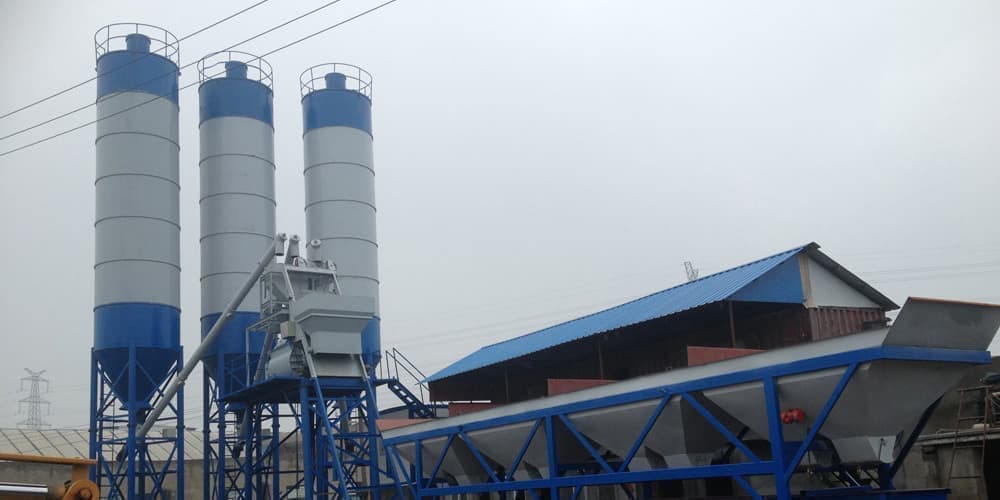
How to reduce the cost of concrete mixing plant?
Reducing the cost of concrete batching plant needs to start from many aspects, such as equipment purchase, operation and management, technology application and so on. Here are some effective strategies:
1. Equipment procurement stage:
-
Consider buying used equipment: Used equipment is usually 30-50 per cent cheaper than new equipment and can be an effective way to reduce the initial investment. However, the condition of the equipment needs to be carefully evaluated, weighing its maintenance costs and remaining useful life. Choosing a reputable supplier of used equipment is critical.
-
Choose the right type of equipment and capacity according to project needs: Avoid blindly pursuing large equipment or high capacity, and choose the right type of equipment (stationary or mobile) and capacity according to the size of the project and the amount of concrete needed to minimise idle equipment and waste.
-
Use compact equipment (for small and medium-sized projects): Compact equipment is flexible in design and can be customised according to specific project requirements, effectively reducing equipment procurement and installation costs.
2. Operation management stage:
-
Control the cost of raw materials: establish contact with several suppliers, make price comparisons, and establish long-term relationships with them to obtain more favourable prices and stable supply. Meanwhile, optimise the storage and management of raw materials to reduce waste.
-
Control transport costs: Choose appropriate transport methods according to the actual situation, such as establishing our own transport fleet or cooperating with third-party logistics companies. Optimise transport routes and scheduling to improve transport efficiency and reduce transport costs.
-
Control equipment depreciation and maintenance costs: formulate a comprehensive equipment maintenance plan, and regularly inspect, maintain and repair the equipment to extend the service life of the equipment and reduce the repair cost and downtime.
-
Improve production efficiency: Optimise the production process, improve equipment utilisation and production efficiency, and reduce unit production costs. For example, adopt advanced batching and mixing technology to improve the production speed and quality of concrete.
-
Effective management of energy consumption: Adopt energy-saving measures, such as using high-efficiency motors and optimising energy-use plans, to reduce energy costs.
3. technology application:
Adoption of advanced technology and automated systems: Adoption of advanced control systems, automated dosage systems and information management systems can improve production efficiency, reduce labour costs, reduce human errors and achieve refined management.
Other key factors affecting the cost of concrete batching plant:
In addition to the above controllable strategies, there are some external factors that can also affect the cost of concrete batching plant:
-
Market Demand: Strong demand in the local concrete market can increase sales and revenues, thereby diluting fixed costs and reducing unit costs.
-
Maintenance costs: The maintenance costs of the equipment directly affect the operating costs and profitability. Choose reliable quality, easy to maintain equipment, and establish a perfect maintenance system, you can effectively control the maintenance costs.
-
Production efficiency: efficient production equipment and optimised production processes can increase production, reduce unit production costs, thereby increasing profitability.
Frequently Asked Questions about Concrete Batching Plant
Q: What are the precautions for maintenance and care of concrete batching plant?
A: The maintenance and upkeep of a batching plant usually includes the following parts:
-
Regular inspection: check the parts of the batching plant regularly to ensure its normal operation.
-
Cleaning: Clean the residues in the mixer and batcher in time after production to prevent cross contamination of materials.
-
Lubrication management: regular lubrication of mechanical parts to reduce the probability of wear and failure.
Q: How to choose the right concrete batching plant supplier?
A: The following factors should be considered when choosing a concrete batching plant supplier:
-
Product quality: Choose products with reliable quality and stable performance.
-
Technical strength: the supplier should have strong technical research and development and production capacity.
-
After-sales service: The supplier should provide perfect after-sales service, including installation and commissioning, maintenance and technical support.
-
Reputation and reputation: Choose suppliers with good reputation and good word of mouth.
Q: What are the functions of the control system of concrete mixing plant?
A: A modern concrete batching plant control system usually has the following functions:
-
Automatic batching: Automatically control the measurement and batching of various materials according to the set ratio.
-
Data collection and storage: Record batching data, production data, etc., which is convenient for statistics and analysis.
-
Report Generation: Automatically generate various reports, such as dosage report, production report, etc.
-
Troubleshooting and Alarm: Automatically detects equipment faults and sends out alarm messages.
-
Remote Monitoring and Control: Remote monitoring and control through the network.
Q: How to improve the production efficiency of the batching plant?
A: Ways to improve the productivity of a concrete batching plant include:
-
Optimise batching parameters: Adjust the batching parameters according to the material characteristics and production requirements to shorten the batching time.
-
Reasonable arrangement of production plan: avoid frequent switching formula, reduce downtime.
-
Enhance the maintenance of equipment: reduce the equipment failure, improve the equipment utilisation rate.
-
Improve operator skills: Provide professional training to operators to improve their operating skills and efficiency.
Q: What types of concrete can be produced in a batching plant?
A: Modern concrete batching plants can usually produce normal concrete, high performance concrete, lightweight aggregate concrete, fluid concrete and special concrete. It depends on the configuration and performance of the batching plant, such as batching accuracy, mixer type, admixture dosing system and control system.

 English
English 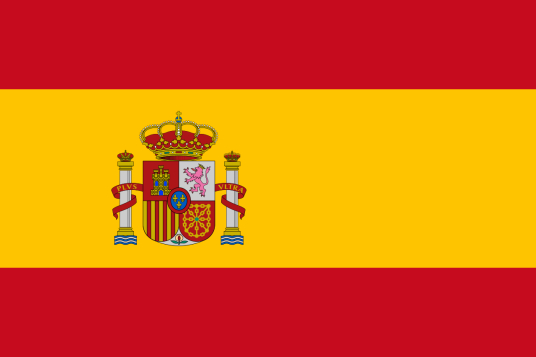 Español
Español  简体中文
简体中文  Pусский
Pусский  українська
українська 